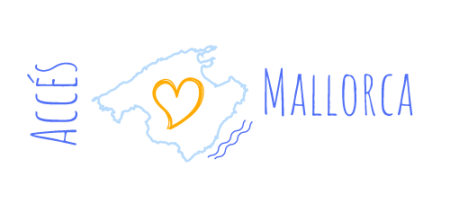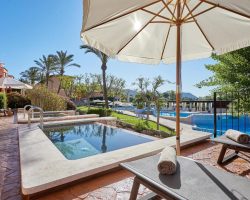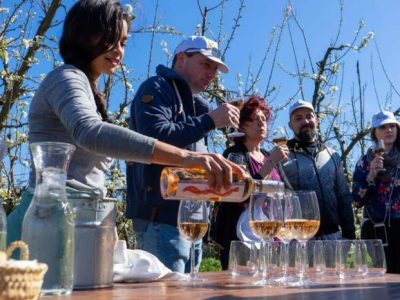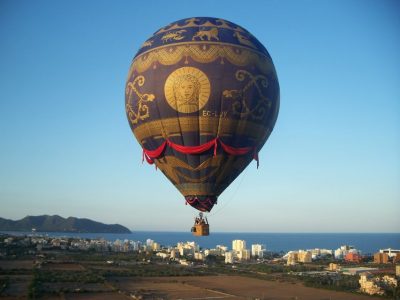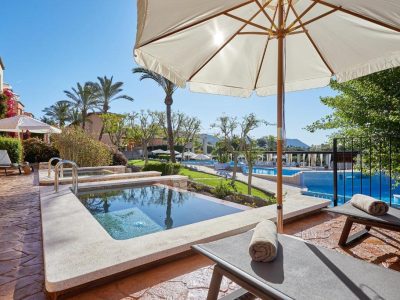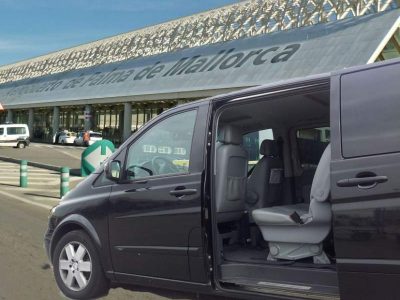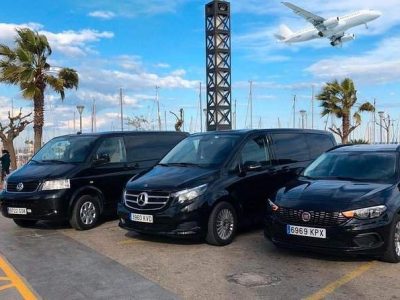Son Servera, Mallorca, Things to do and see, hotels, market
Son Servera is a typical small Mallorcan village located a few kilometers from morewell-known tourist destinations of Cala Bona, Cala Millor and Canyamel.
Son Servera is what one would typically call a sleepy village, not much happens during the daytime. But why visit then? Well, Son Servera is home to the impressive open-air church Església Nova, a true piece of art, that attracts many tourists every year. There is also the annual almond festival in February and then there is the cozy village core with its bars and shops.
Son Servera is also home to a wide range of activity offers, such as golf, cycling, beaches and much more.
- This is where I want to go!
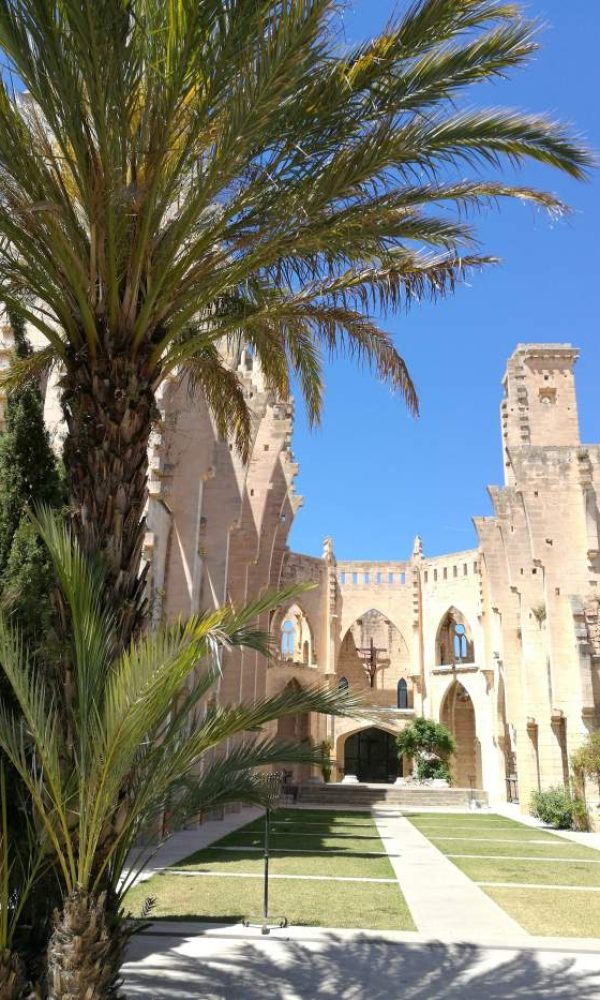
Why visit Son Servera
Things to do in Son Servera
VISIT ESGLESIA NOVA
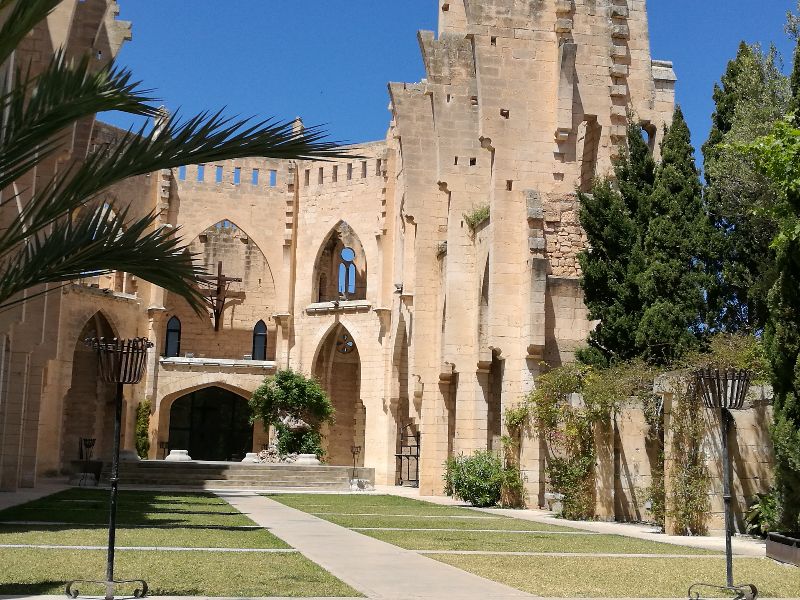
Església Nova – or New Church – is one of the most beautiful an unique churches in Mallorca, and a sought-for wedding venue. The open-air church was designed by famous Catalan architect Joan Rubio, a partner of Antoni Gaudí.
GOLFING
Golfing is one of the main leisure activities in the area of Son Servera, some would even say this is one of Spain’s best golfing destinations. Within the radius of 10 km you will find some of the island’s very best, beautiful and most challenging golf courses and their wonderful restaurants.
VISIT CALA BONA BEACH
Cala Bona is one of the island’s most popular holiday destinations, it has been so for decades because of the nice protected beach and the family-friendly atmosphere in the charming old fishing village. From Son Servera, you only have a short trip to do to get to the wonderful sandy beach of Cala Bona where you can easily spend a day recharging the batteries under the Mediterranean sun and swimming in the clear shallow waters.
GO CYCLING
Cycling tourism is continuing to increase in popularity amongst active tourists and, Mallorca is one of the best destinations for this sport. From Son Servera, you can easily reach the most scenic places along the north and east coast of the island, or follow some of the historical trails or even Mallorca’s only Green Route which is found not far from here. The hilly terrains of the northeastern island makes it both fun and challenging to spin pedals here.
BOAT TRIP AROUND THE COAST
See Mallorca from a new angle, from the deck of a boat. The boat trips will take you to the many hidden gems along the coastlines, the caves hidden in the rocks and the small lagoons with crystal clear waters where you can see the fish swimming on the bottom. The boat trips usually make a few stops for you to go swimming in these lagoons, but you can also choose to just stay on deck and enjoy the magical views and the tranquility of the sea. Head down to Cala Bona or Cala Millor to find the boat trips around the coast.
WALKING
Walking is another very popular activity to do in the area of Son Servera. The hills and coastlines makes for excellent walking routes to find the most splendid views and diverse wildlife to indulge in. If you are a more experienced hiker, you want to go to the Llevant nature park located in Artà where you will find marked trails leading about in the scenic mountains.
HORSEBACK RIDING
Saddle up and enjoy a relaxing and scenic ride on the back of a horse along the coast or in the hills. Rancho Willy in Cala Bona and Rancho Bonanza in Cala Millor are ready to give you the best service and find the perfect horse according to your experience. If you are traveling with kids, both ranches have ponies.
PARISH CHURCH OF SANT JOAN BAUTISTA
The parish church of Sant Joan Baptista stands at the main square of Son Servera, giving the village its charming and cute look. The parish church was built on top of a former watchtower that used to protect the inhabitants back when Son Servera was not even a village.
ES PATORET
The statue and memorial plate found at the main square of Son Servera is called “es Pastoret”, a tribute to the pastor whom locked down the village and saved hundreds of lives during the 1820 bubonic plague.
ELS RENTADORS LAVOIR
Els Rentadors is a former wash house, a lavoir, standing as a monument on the outskirts of the village.
IMAGE GALLERY
Enjoy some beautiful pictures from Son Servera
FAQ
Here are the best accommodation options in Son Servera:
Son Servera is located near the east coast of Mallorca, approx. 65 km (~40 miles) from Palma airport. The transfer time by car or taxi is about 45 minutes.
A taxi from the airport will cost about 75-80 euros.
If you prefer a more comfortable transfer, consider an air-conditioned private minibus. Book here
The weekly market in Son Servera is held everyFriday morning. It’s a nice market that during the summertime sees a lot more visitors due to the nearby Cala Bona resort.
Market and Events in Son Servera
Weekly market in Son Servera
Every Friday morning in the Plaça de Sant Joan (main square), the weekly market is held. It is a traditional farmers market selling fruits, vegetables, flowers, crafts, herbs, meats etc. Visiting the market gives you a good opportunity to know some of the typical products of Son Servera, such as figs, almonds and sausages. There are also a selection of typical Mallorcan crafts like palm-leaf basketwork and painted ceramics.
Events and festivities in Son Servera
January
SANT ANTONI
The celebration of Sant Antoni is one of the most tradition bound in the Mallorcan calendar. Sant Antoni Abat is the protector of animals, and in traditionally rural areas such as Son Servera which has a long history of raising cattle and sheep, the honoring of this saint means a lot to the people. The official feast day is January 17, however, the festivities begins several days ahead with fun and cultural activities and events for all ages. Some of the most emblematic traditions you will experience, are the dancing devils, the correfocs (shooting fireworks) and the bonfires lit in the streets. On the day of Sant Antoni, it is tradition for people to bring their pets to the church to receive blessings.
February
Sant Ignasi d’Antioquia
In 1820, the most deadly epidemic of bubonic plague stroke the town of Son Servera and killed more than 1,000 people, resulting in a cordon of the town to prevent the plague from spreading. On the 21th of February 1821, the mayor dissolved the cordon declaring the epidemic gone. Every year, on February 1st, the town of Son Servera remembers and pay homage to those who lost their lives, families and, those who helped rebuilding the town.
June
Festes de Sant Joan
Sant Joan Bautista (Saint John the Baptist) is the patron saint of Son Servera and every year in June he is celebrated for an entire week. The celebration has been a tradition since the erection of the parish church of same name in the beginning of the 18th century when Son Servera was starting to take shape as a town. A week of fun and cultural events awaits for young and adults such as games, competitions, sports, exhibitions and various performances. The festivities are kicked off with the traditional “Pregó de les festes” and an open-air community dinner.
July
Festivities of Mare de Déu del Carme de Cala Bona
Around the 16th of July, the beloved holiday resort of Cala Bona celebrates its patron saint, Carme. Carme is protector of seamen and plays an important role in the culture of the coastal areas on the island. The celebration of Carme includes a range of wonderful events and activities for as well locals as tourists. Some of the highlights include the procession at sea and the havanera concert.
Festes de Mare de Déu dels Àngels de Cala Millor
Patron saint of the church in Cala Millor, Our Lady of Angels, is celebrated with a series of traditional events during late July. The festivities include popular Mallorcan dances, concerts, exhibitions, processions and much more, all in the spirit of celebration. These events usually attract a large number of locals and tourists, and a great opportunity to discover a traditional Mallorcan celebration.
September
Tourism Festival
During the last week of September, Son Servera and Sant Llorenç de Cardarssar joins up and arranges one of the most extensive festivals of the year, the Tourism Festival. All over the areas of Son Servera, Sant Llorenç des Cardarssar, Cala Bona and Cala Millor, you can look forward to a full stacked program of fun, cultural and tasteful activities. On the tapas routes, you can get unique and delicious tapas and pinxos for almost no money, along with free tapas tastings in some of the hotels and bars. There will be a series of fun sports competitions and games, such as a beach volley tournament or the traditional Catalan Human Tower competition. There is also opportunity to meet some of Mallorca’s most beloved traditions such as the dancing giants and firework shows. Exhibitions and extended markets, workshops, open house events in the Pula Golf and other leisure businesses and of course a lot of concerts to set the mood. It is an entire week of just fun and good times, and a really good time to be visiting!
December
Nadal
Christmas and new years eve are the two protagonists of December in Mallorca. On Christmas eve, after having enjoyed a good meal with the family, it is tradition for the people of Son Servera to go to church to attend a Christmas mass. At the mass, an ancient tradition is performed; a sibyl walks to the altar to sing a song about the end of the world, the judgement day and the disasters of nature. However, the Erythraean Sibyl is here for salvation.
Typically, the role of the Sibyl is performed by a boy or girl dressed in colorful coat and hat, carrying a sword to the altar. Back in the classical antiquity, the sibyl (sibylla) was a prophetess whom answered questions regarding the future.
New Years eve is special too. The inhabitants gathers in the Plaça de Sant Joan, the main square in front of the church, to celebrate the coming of the new year. There will be fireworks, champagne, speeches, music to set a festive atmosphere.
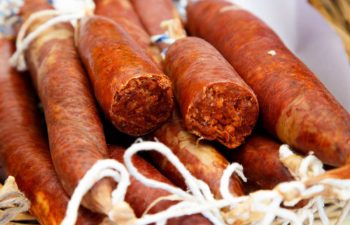
Support Local
Supporting local communities during your travels can have a profound impact. Stock up with groceries locally, stop in an artisan shop or enjoy a refreshment at a restaurant or bar. Now more than ever, these small businesses need support from travelers near and far.
Get to know the area of Son Servera
ABOUT THE AREA OF SON SERVERA
Son Servera is a town and municipality located in the northern part of the Llevant region, Mallorca’s most eastern region. The area borders the surrounding municipalities of Capdepera, Ártà, Sant Llorenç des Cardarssar.
Son Servera is home to some of the most popular beach areas of Mallorca, namely Cala Millor and Cala Bona, but also the secluded area of Costa del Pins.
ypical products of the area
- Almonds
- Olives
- Cereals
History of Son Servera
In the following, you will be able to read and discover how the area of Son Servera has developed all the way back from prehistoric times. We will go through some of the major periods and events which has affected the municipality played a role in the local history.
Prehistory
The area of the current day municipality has been inhabited by humans for more than 3,000 years. About 42 archaeological sites scattered over the municipal border testifies the human activity all the way back from pre-Talayotic times (2,400 – 1,100 BC). From this period, the caves of Sa Font Gata, Es Rafal Baix and Ca s’Hereu gives us some of the best ideas about how life was back in the early days.
From the Talayotic culture (1,100 – 100 BC), Pula, Sa Pleta, Son Gener, des Puig, Mestre Ramon and Ca s’Hereu shows us the life on the island in the early villages and fortifications.
Islamic period
Mallorca was officially annexed to the Emirate of Cordoba in 902-3, when Issam al-Khawlaní conquered the archipelago. The capital was named Madina Mayurqua, while most of the communities outside the city were grouped in small farmsteads and hamlets (alquerias) if not just in huts (rafals) scattered all over. However, the Muslim settlers did divide the island in multiple jurisdictions, the ajzà (singular: juz), whereof this area belonged to Juz d’ Yartan, which also included current day municipalities of Ártà and Capdepera.
Some of the biggest and most important farmsteads was those of Benu-Quinena Algarbia and Benu-Quinena Exarquia, belonging to the tribes of Quienena as the names suggests. These two farmsteads or hamlets was undoubtedly the most important of the community, and located where the current village is today. The Muslims irrigated the soil, started cultivating crops and built water transportation systems. Some of these elements are still part of the physical presence of Son Servera, such as the fountain of Sa Jornada and the water mills of Son Comparet and Son Sard – but indeed also in the cultural heritage of the island. Another important remain from the Islamic period, was the one of Banyeres, a villa located close to the Port Vell where remains of a bath has been discovered. This could have been a public washing house or the property of a high standing tribe leader.
The Aragonese conquest
In September 1229, King Jaume I of Aragón and his 27,000 men landed at the shore of Santa Ponca. The campaign was a part of the reconquista and to extend the territories of the Crown of Aragón. At the end of the same year, the Aragonese troops had already triumphed in Madina Mayurqua, and soon after renamed it to “Ciutat de Mallorca”. About 20,000 Moors had fled to the Tramuntana and Llevant areas during the battles, some had fled to the neighboring island of Menorca. The upcoming spring, the king set off to capture and conquer the rest of the island and those Moors that had fled. The Muslims living outside the capital were farmers and not warriors, and the resistance was easy to overcome for the trained Almogavars. One of the most notable battles in the Llevant area, was in March 1230, when the troops faced a resistance of about 2,000 Moors hiding in caves in the area of Ártà, The Llibre del Fets (Book of Acts) describes the battle in detail how the soldiers camped at the feet of the mountains next to a river entrapping the Muslim resistance in the caves of the mountains. Another anecdote from the Llibre del Fets, from these areas, is the signing of the Treaty of Capdepera on June 17th, 1231. This event took place in the neighboring area of Capdepera, when the king pretended to prepare for battle against Menorca, and scared the Moors to come to him to negotiate a peaceful surrender.
The lands of Mallorca was divided amongst participators and supporters of the conquest, this was written in the Llibre del Repartiment de Mallorca (Book of Division of Mallorca). The lands of the Yartan district was partially granted men of Marseilles, while the king kept some of the lands himself. In the time following, the manor of Benicanella, which was the Catalan name of the farmstead, was sold to a noble family of Porreres, namely the Cervera family. It is here we find the origin of the name of the village.
The Cervera family, along with the Ferri family, were two of the major landowners in this area renting out land to small peasants. There are also documents stating that some farms named Beni-Dahom and Beni-Alfamah was knights of Sant Jordi d’Alfama (Knights of Saint George), and some lands were given to the infant Pere of Portugal.
The disperse of the population
Until the late 15th century, there was no urban nucleus of the area, only the lands of the Benicanella farmstead. However, with the death of Salvador Cervera in 1474, the farmstead was divided among his two sons and became the possessions of Son Frai Garí and Ca S’Hereu respectively. This also resulted in the disperse of the small population of the area which now settled outside the lands of the farmsteads.
During the 16th century, the threat from the Ottoman empire made life by the coast unsafe. The Ottomans were looking to capture the Balearic archipelago, and as a part of the strategy, they paid Berber privateers to interrupt maritime commerce of the Mediterranean. To better protect and guard the lands and population, the tower of de la Vicaria was erected between the two lands, in what is now the current village of Son Servera and the parish church.
In 1560, another great partition of the lands happened. It was the lands of Ca S’Hereu that was once again divided among children of the Cervera family, which gave rise to new possessions such as la Plana, Son Esquerrà, Son Corb and Son Floriana. Documents from 1580 and 1596 indicate a small urban nucleus surrounding the Torre de la Vicaria.
The foundation of Son Servera
The 17th century gave rise to the current village of Son Servera. The two brothers, Salvador and Sebastià Cervera, owners of the Son Frai Garí possession had accumulated a massive debt which they could not pay. As a consequence of this, the possession was confiscated by the Royal Hearing of Mallorca and sold on a public auction in 1666. The buyer was the University of Ártà looking to divide the lands of the possession and sell it to new landowners. The terms of the sale was based on two major factors; 1. each plot could not exceed 0.71031 ha (7,103.01 m²), 2. only children of the municipality of Ártà (current day Árta, Capdepera and Son Servera) was allowed to purchase.
Between 1666 and 1684, the lands of former possession Son Frai Garí had been converted to 71 new houses. The new houses faced a public road, the current Carrer del Doctor Servera, which divided the lands of Son Frai Garí and Ca S’Hereu.
The intense growth of the population and congregation led to an expansion of the former primitive chapel located by the tower of Vicaria in 1741. In 1750, the population almost reached 1,000 inhabitants, and in 1755, Bishop Llorenç Despuig Cotoner made the temple a vicarage.
The independent municipality
The Constitution of Cádiz (1812) proclaimed the creation of city councils for all those population centers with more than 1,000 inhabitants. In 1813 the population was counted, with a result of 1,651 inhabitants in January of this year: 1,233 in the town itself and 418 outside the town. On January 18, 1814, Son Servera is segregated from the municipality of Ártà for the first time. However, with the suspension of the constitution already in August the same year, Son Servera lost its newly gained independence again.
With the Trienio Liberal between 1820 and 1823, Son Servera once again acquired independence as a municipality. It was, however, not until 1837 that Son Servera was definitively segregated from Ártà.
A terrible chapter in the history of Son Servera is the 1820 bubonic plague, which killed more than half of the population. The town was seized by the military disallowing anyone from leaving or entering the town borders, completely in quarantine. The inhabitants went from 1,808 people in 1820 to 768 by the end of the year. The bubonic plague also affected Ártà, Capdepera, Sant Llorenç des Cardassar and Manacor.
The change in economy
Throughout the 19th century and the first half of the 20th century, Son Servera remained a predominantly agricultural area mainly dedicated to the cultivation of dry land. The neighboring municipalities of Ártà and Capdepera had expanded their economical activities to also include sewing and palm-leaf crafts respectively. Son Servera was also raising livestock, mainly cattle and sheep. In 1921, the railway connecting Manacor and Ártà too arrived here, a sign that it was an important economical center.
With the tourism boom in the 1960’s, the economy of Son Servera really started to take off. The development of Port Vell, Cala Bona, Cala Millor and Costa del Pins, gave rise to a new and primary economy of the municipality. In 1987, there was already about 77 hotels with about 6,800 beds
Practical Info
Useful Numbers
Emergency: 112
National police: 091
Local police: 092
Guarda civil: 062
Fire: 080
Maritime emergencies: 900 202 202
Town Hall: +34 971 56 70 02
Public Transport
Bus lines: 412, 424
Power Supply
220V
